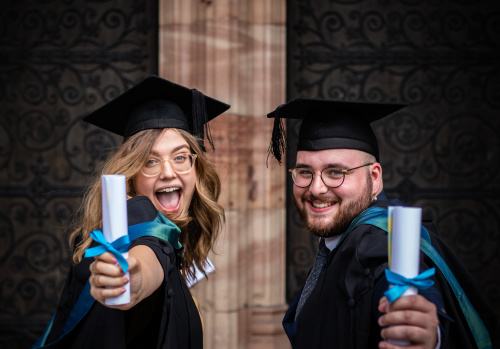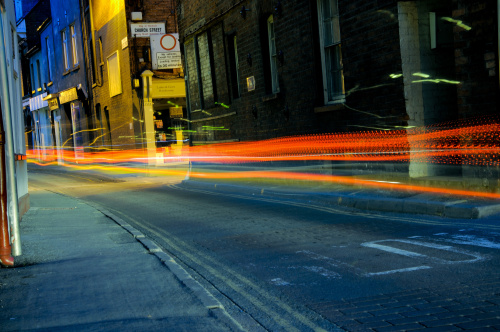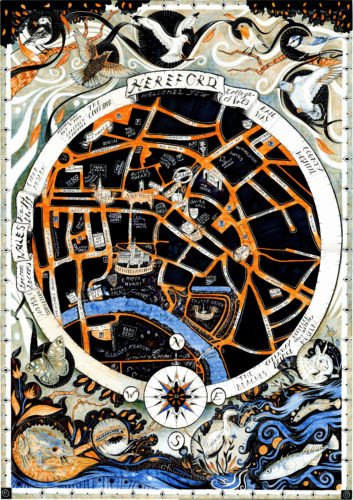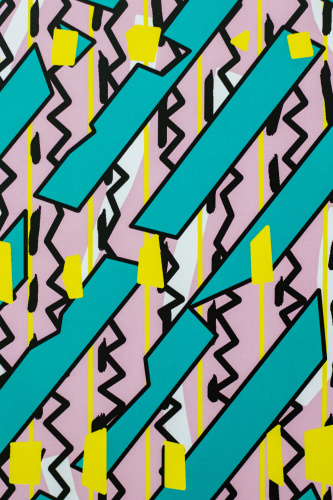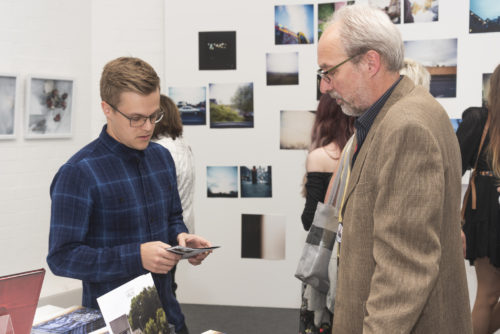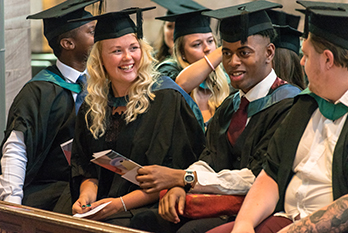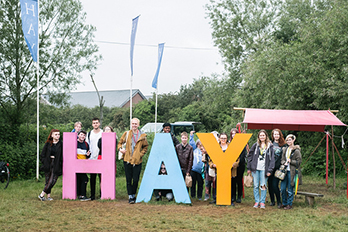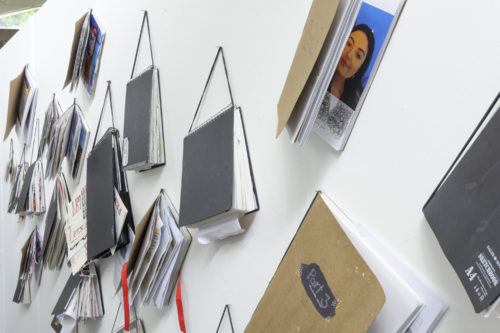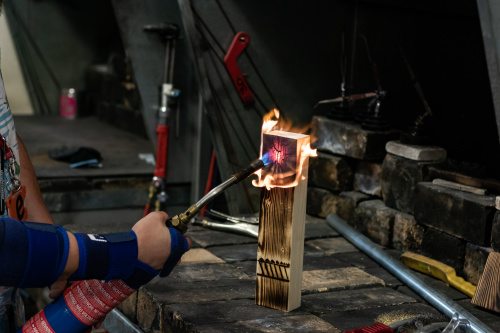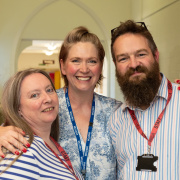HCA Festival of Practice 2019
Published on 05.07.19
Huge thanks to all involved in our Festival of Practice (Monday 24th June). Justin Gregory, head of HE at Hereford College of Arts, opened the day by calling out the importance of creative education and how it helps us think about the world differently. He also spoke about the importance of creating spaces to
Categories
Huge thanks to all involved in our Festival of Practice (Monday 24th June).
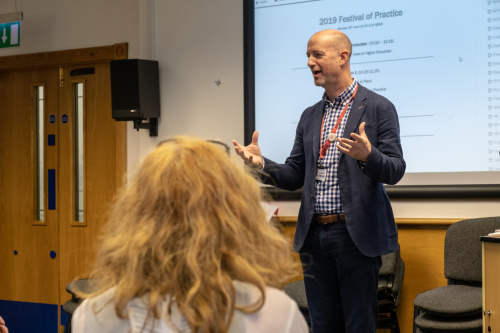
Justin Gregory, head of HE at Hereford College of Arts, opened the day by calling out the importance of creative education and how it helps us think about the world differently. He also spoke about the importance of creating spaces to discuss our dual practice as both educators and creatives.
Celia Johnson: remaking, retouching, resurfacing

Starting the day, Celia Johnson, lecturer on the B.A (Hons) Fine Art programme discussed her creative arts practice, thinking about painting, painting as ‘becoming’ and the things we hide.
Celia finds the actual a fragile, transient thing – she embraces how painting welcomes mistakes, contradictions and possible disasters; how it is not about copying the world but instead is a reassertion of the world. In her current work, she uses paint that would, to traditional notions and cultural framings of the ‘artist’ be seen as ‘other’ – her use of Dulux subverts convention and speaks against the idea of the painter as a middle-class ‘other’.
‘when I walk, I consider that a drawing in space.’
All Celia’s paintings start with a walk – during her presentation, she described how mobility is a medium for her practice, and she is equally fascinated by the movement, viscosity and mutability of paint and how paint is an actant in the relationship between illusion and materiality.
In this way, her work explores paint as a mechanism for hiding and amalgamating rather than aesthetic – for through paint we can remember:
“Painting is a time-based medium – it is elusive – you are remembering, remaking, retouching & resurfacing. Different to drawing – in painting, you’re retouching that experience. Things can become different.”
AJ Stockwell: Lure of the Lithic
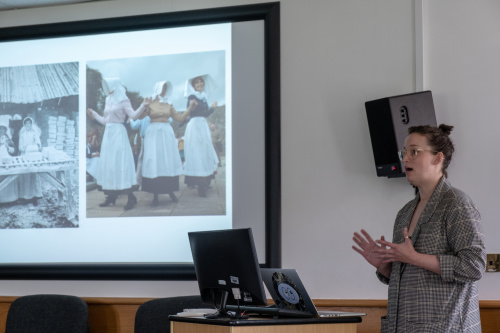
A.J. shared a film with us – Stalker (see below). The ideas in the film resonated with her as a child and the ideas it inspired continue to inform her work today.
A.J. is interested in ideas of geology – she works across many cross-disciplinary borders and is collaborative in her approach to research, where she explores the propensities of rock and the ‘secret interiors of the earth’. Her work is sculptural – sculptures of space, place and time, and within them, she considers ideas of place and of experience – how people become ‘functions of a landscape’ (Malpus). She is also interested in folk tradition and how this is also shaped by landscape (the example she gives is of folk dancing; types of folk dancing which are embedded in industrial ‘place’)
Her work echoes this, as an embodied and meditative engagement with material. A.J. uses dance and performance, combining sound with dance in a way which also engages participants. She showed us a recent project which created a utopian folk myth grown from the realities of a specific place, which used clog dancing as a way to provide an immersive and participatory experience rooted in, ultimately, not just the industrial or post-industrial landscape but a socio-historical understanding of the impact of geology on both.
A.J. is driven by a desire to communicate with the non-human and sees making as having a conversation with this. In her recent work, she considers what ‘dislocation’ does to a personal sense of identity and considers ideas of geologic identity and the rock bodies with which we, as individuals, resonate. Her forthcoming project considers water as the negotiation space between rock and the human body, exploring ideas of ‘kin’ not just between species but between human and ‘The Lithic’; the thin, ‘fey’ spaces where we might cross worlds. This argues A-J, might be our geologic heritage; something difficult to understand when located in a city where water has passed from human to human, but something we might understand better when we draw water from the rock in a place which has been informed by our own geological heritage.
Oliver Cameron-Swan
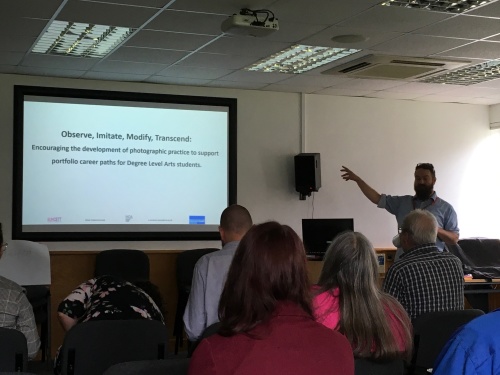
From my perspective, Oli’s research project (funded by the Education and Training Foundation and supported by SUNCETT) is almost magical in the way it blends research, practice and pedagogy.
To share further, Oli is a professional photographer who also teaches photography. He has (and has always had) what we call a ‘portfolio’ career, juggling multiple plates and doing more than one thing (on the go) at one time. He discusses how we need, as creative educators, to explore this and articulate it carefully to students, as it breaks away from a traditional model of ‘leave college/Uni and get a job’. A model which in many ways is more applicable to our fragile 21st-century context.
In his presentation, we learned more about Oli’s pilot study with Artist Blacksmiths. Last year he undertook a small intervention as part of SUNCETT’s short programme. However, the students wanted more than this intervention – they wanted to know more about how they might take better photographs in the workshop environment – this key theme was clear despite all the student working at different levels with different awarenesses of their photographic practices.
Oli’s research uses Sennett’s ‘The Craftsman’ to articulate the importance of the workshop as a place:
He explores how there are different terms and ways of practicing when students are making work and the intrinsic benefits of sharing with students how they are making rather than just showcasing their practice at the end. However beautiful the ‘end’ product might be it is ultimately static. It showcases without telling a story; without bringing in an idea of the process, or of scale.
Holly Bolt and Ulia Sawyer: the gift of technology
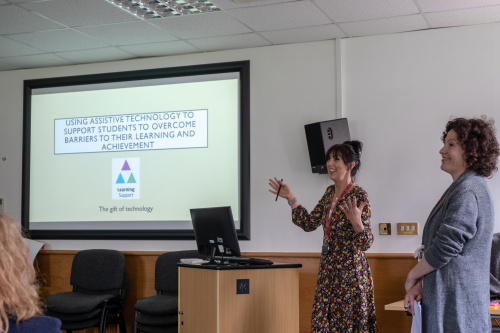
Significantly, we work in a place and space at HCA, where creative and conceptual practice works alongside self-aware and reflective educational expertise and professionalism. Holly and Ulia’s presentation showcased the latter, as they shared the positive impact of assistive technology on students but also embraced the broader picture around how and why we might need to, as creative educators, reflect on how we use technology to support students’ learning.
We heard from students who have found assistive technology to be highly supportive of their current creative practice, but we also heard about their journey – and how it is vital as an educator to see ‘assistive technology’ not as a one-stop, one-app shop for success but as a personal and individual choice. One size does not fit all, and students need to develop their own toolkit of software that is right for them. Different things will work differently for different people, and we need to get students to work hands-on and trial various technologies and strategies, to find out what will help them best and to break down cultural barriers while being aware of broader arguments around the role of technology in supporting learning.
We are lucky to have educators like Holly and Ulia on our team; they are happy to share tips, techniques and useful software, but also draw on their experiences with supporting students to reflect on and disseminate more extensive points about how we might use technology as creative educators.
Nicholas Stevenson : Unthinking space
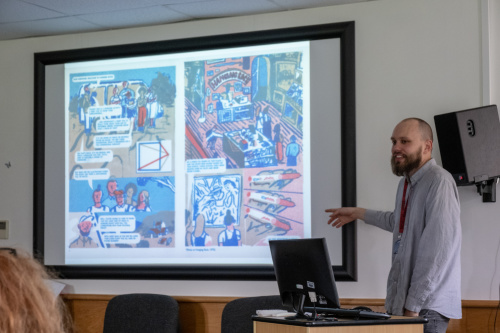
Our afternoon was joyously taken over by the fantastic Nicholas Stevenson. Nicholas’ M.A. work explores how students access embodied experience differently. His zine (limited edition and I have one!) uses the iconic film’ Picnic at Hanging Rock’ as a springboard for exploring Lefebvrian ideas of space and place as realised and represented through different media.
For example, Nicholas imagines the gift shop at hanging rock, using this to explore different types of representation in a post-colonialist critical argument which explores the impact of ‘consumerising’ both the aboriginal understandings of a place and their appropriated understandings in a visual meta-analysis and critical re-storytelling which centres on how westernised ‘rationalised’ space appropriates meanings and uses these to reinforce existing power structures.
The images of space we make matter and the way we map space matters. Maps, for Nicholas, are one type of politicisation of space. Another theorist used in the zine is McLuhan – who also recognises the troubling dominance of the visual sense in global capitalist culture. McLuhan, however, offers the possibility of acoustic or auditory modes, mediums that appear all at once as a full body experience. He particularly sites art of indigenous cultures, which while delivered in a visual medium, don’t privilege a purely visual sense of space. In this way, we are led to consider alternative ways of understanding pictorial spaces, such as those expressed through Inuit art – which doesn’t support western notions and their culturally driven ideas of space and time.
In Nicholas’s own work, he plays with perspective – for example, using inverse perspective. However, he is also aware that playing with perspective is, essentially, a political act:
‘Angle is a weathervane as to how space blowing.’
In this way, in his drawing workshop, Nicholas showed us how hard it is to unlearn space. His current work seeks to disrupt and unlearn space, covertly sneaking in theory through his illustrative practice.
And…
And finally, like the most superb coda or filmic postscript, here’s a video of a live performance created on the day, which explores music, performance, soundscape and drawing practice. Arts college collaboration.
Thanks to Oli Cameron-Swan for taking photographs. This also explains why the photograph of Oli himself is less professional than the others (sorry, Oli).
